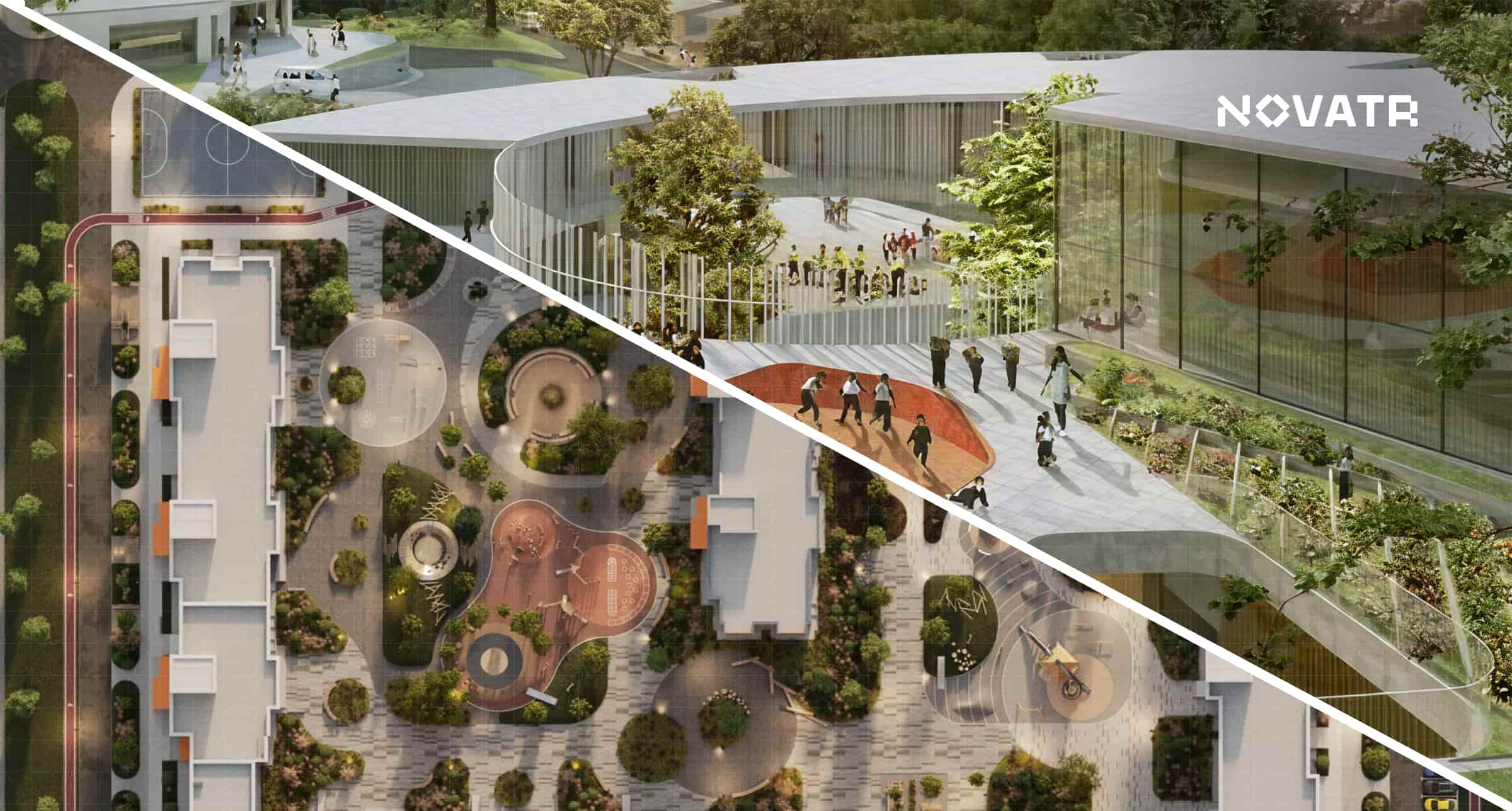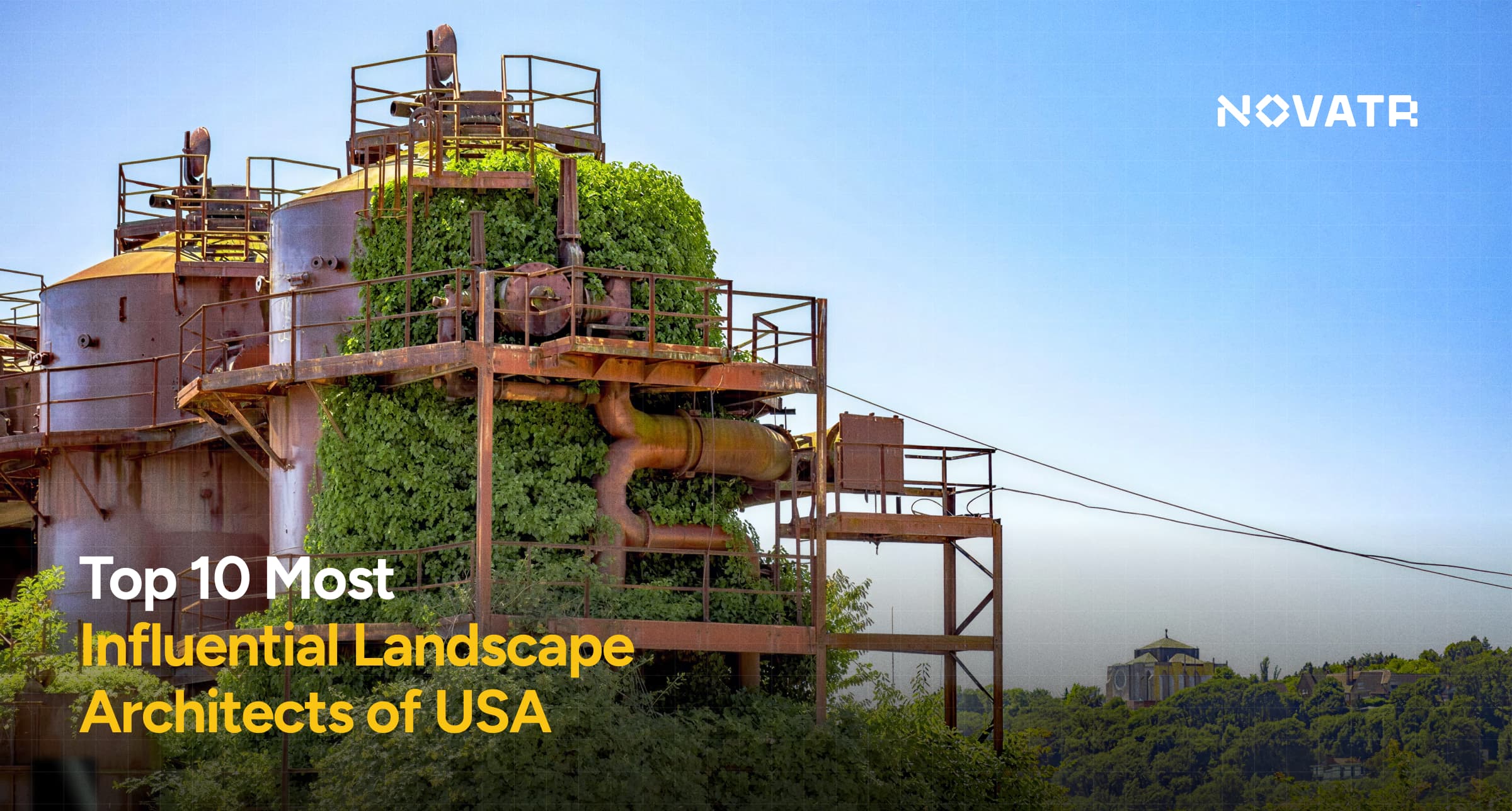
Landscape architecture is the art and science of designing outdoor places that are functional and beautiful. Landscape architecture projects of the United States have shaped the functioning aspect of urban and natural spaces with ecology, design, and the public. These famous projects in landscape architecture serve to inspire new ideas and, of course, to redefine the very essence of public space.
As per the US Bureau of Labor Statistics, landscape architects in the US receive a competitive median yearly salary of $79,660 as of May 2024, which exceeds the median for all occupations, reflecting the field's specialized nature and significance in design and environmental planning fields.
Top 10 Famous Landscape Architecture Projects in the USA
Discover how these landscape architectural projects in USA have reshaped cities to create inspiring urban spaces worldwide.
1. The High Line – New York City

An overused elevated rail track has now been converted into a Green Promenade of 1.45 miles crossing the busy streets of Manhattan. The High Line is a linear park landscape.
- What Makes It Iconic:
View of adaptive reuse in urban planning, one of the most celebrated contemporary projects of landscape architecture in the world. - Impact:
It set the global standard forcing the landscape architecture community to step up and rehabilitate industrial infrastructure into public green space around the world.
2. Millennium Park – Chicago

Millennium Park spans over 24 acres in downtown Chicago, blending art, landscape, and architecture. Home to the Cloud Gate, Crown Fountain, and Lurie Garden, it invites visitors to interact with art in nature.
- What Makes It Iconic:
Its integration of large-scale sculpture and landscape design makes it a flagship example of experiential public space. - Impact:
This park landscape influenced cities to prioritise cultural identity and environmental quality through landscape design and architecture.
3. Gas Works Park – Seattle

Built on the site of a former gasification plant, this park preserves industrial remnants while introducing large grassy hills, picnic areas, and views of Lake Union.
- What Makes It Iconic:
Gas Works is one of the earliest examples of sustainable landscape architecture projects that merge ecology with industrial heritage. - Impact:
It sparked a new wave of industrial site reclamation and landscape architecture examples that honour history while restoring function.
Also Read: Top 10 BIM Online Certification Courses in the USA for Architects & Civil Engineers
4. The Getty Center Gardens – Los Angeles

Situated at the Getty Museum, this 134,000-square-foot Central Garden, designed by Robert Irwi,n features ever-changing plantings, walkways, and a stream.
- What Makes It Iconic:
A living artwork, the garden transforms seasonal change into a sensory experience, blending art and landscape seamlessly. - Impact:
It elevated landscape architecture into the cultural mainstream, inspiring art institutions to invest in botanical and immersive design.
5. Black Rock City – Nevada

Each year, the Black Rock Desert hosts a temporary city for one week, built on radial geometry, complete with roads, camps, and open space, then fully dismantled post-event.
- What Makes It Iconic:
Its circular layout and “leave no trace” principle exemplify how landscape projects can be designed for temporary use while remaining functional, even for short-lived environments. - Impact:
It is a prime example of pop-up, green landscape architecture, inspiring new standards for eco-conscious festivals and event-based urbanism.
6. Discovery Green – Houston

A once-barren parking area transformed into a vibrant 12-acre park with native plantings, wetlands, public art, and performance areas in Houston’s downtown and is one of the best landscape architectural projects in the US.
- What Makes It Iconic:
Blends sustainability with urban renewal, revitalizing unused space. - Impact:
It demonstrated how landscaping services can enhance urban resilience and foster social connection through residential landscape architecture and urban renewal.
7. ASLA Green Roof – Washington, D.C.

Located atop the American Society of Landscape Architects headquarters, this green roof features native vegetation and a functioning stormwater system.
- What Makes It Iconic:
One of D.C.’s earliest green roofs, showcasing benefits like cooling, drainage, and biodiversity. - Impact:
It promoted sustainable landscape architecture projects in urban areas and influenced building codes nationwide.
8. Brooklyn Bridge Park – New York City

Stretching across 1.3 miles of Brooklyn waterfront, this park transformed industrial piers into multi-use green space with tidal marshes, sports fields, and promenades.
- What Makes It Iconic:
A model of coastal resilience and climate-adaptive landscape design. - Impact:
Showcases how landscape architecture can tackle rising sea levels while serving as community infrastructure.
9. The 606 – Chicago

Built on an old rail line, The 606 is a 2.7-mile elevated greenway connecting neighbourhoods with trails, parks, and public art.
- What Makes It Iconic:
Merged transport, ecology, and culture in a single linear corridor, redefining landscape architecture. - Impact:
It influenced cities to combine green mobility and equitable access in residential landscape architecture planning.
10. Peavey Plaza – Minneapolis

This 1970s modernist park was restored to maintain its historical form while adding accessibility and sustainable updates.
- What Makes It Iconic:
Blends original concrete design with green upgrades and ADA compliance. - Impact:
A model for how award-winning landscape architecture projects can evolve while preserving historical integrity.
Also Read: Architecture Thesis Topics: A Comprehensive List of 30 Topics to Pick From 2025
How do These Projects Influence the Landscaping Industry?
These landscape architecture examples have changed how professionals and communities view outdoor spaces. Their storytelling inspires landscaping services to focus not just on aesthetics but also ecology, mobility, and social impact. Tools like landscape architecture software allow designers to visualise, simulate, and refine landscape architecture concepts into reality.
Their influence extends to:
-
Residential landscape architecture, where green roofs, native gardens, and stormwater solutions are now mainstream.
-
Park landscape architecture, which has become essential to urban wellbeing and environmental health.
-
Sustainable landscape architecture projects, driving cities toward net-zero and climate-resilient goals.
Conclusion
These top 10 famous landscape architecture projects across the USA show how design transforms lives and landscapes. Each project has reshaped its community, fostered sustainability, and set the gold standard for landscape design and architecture.
For those aspiring to lead the next wave of transformation in the built environment, the Building Information Modeling Professional Course for Architects by Novatr empowers you to master infrastructure design and digital project delivery, setting you apart in a competitive landscape. Explore more insights and expert-curated resources by visiting our resource page, and take the next step in shaping the future of design.
FAQs
1. What are some of the most iconic landscape architecture projects in the USA?
Famous landscape architecture projects like Millennium Park and High Line are celebrated for their innovation and sustainability, setting global standards in modern landscape design and architecture.
2. Who are the famous landscape architects behind these renowned US projects?
James Corner, Kathryn Gustafson, Peter Walker, and Laurie Olin are key figures in American landscape architecture, known for projects that blend ecology, culture, and public space design.
3. How have landscape architecture projects in the USA influenced urban design globally?
U.S. projects have shaped global urban planning by demonstrating how green landscape architecture, sustainability, and public utility can merge, inspiring cities to create inclusive, resilient, and sustainable landscape architecture projects worldwide.
Was this content helpful to you



.jpg)





.png)

.png)